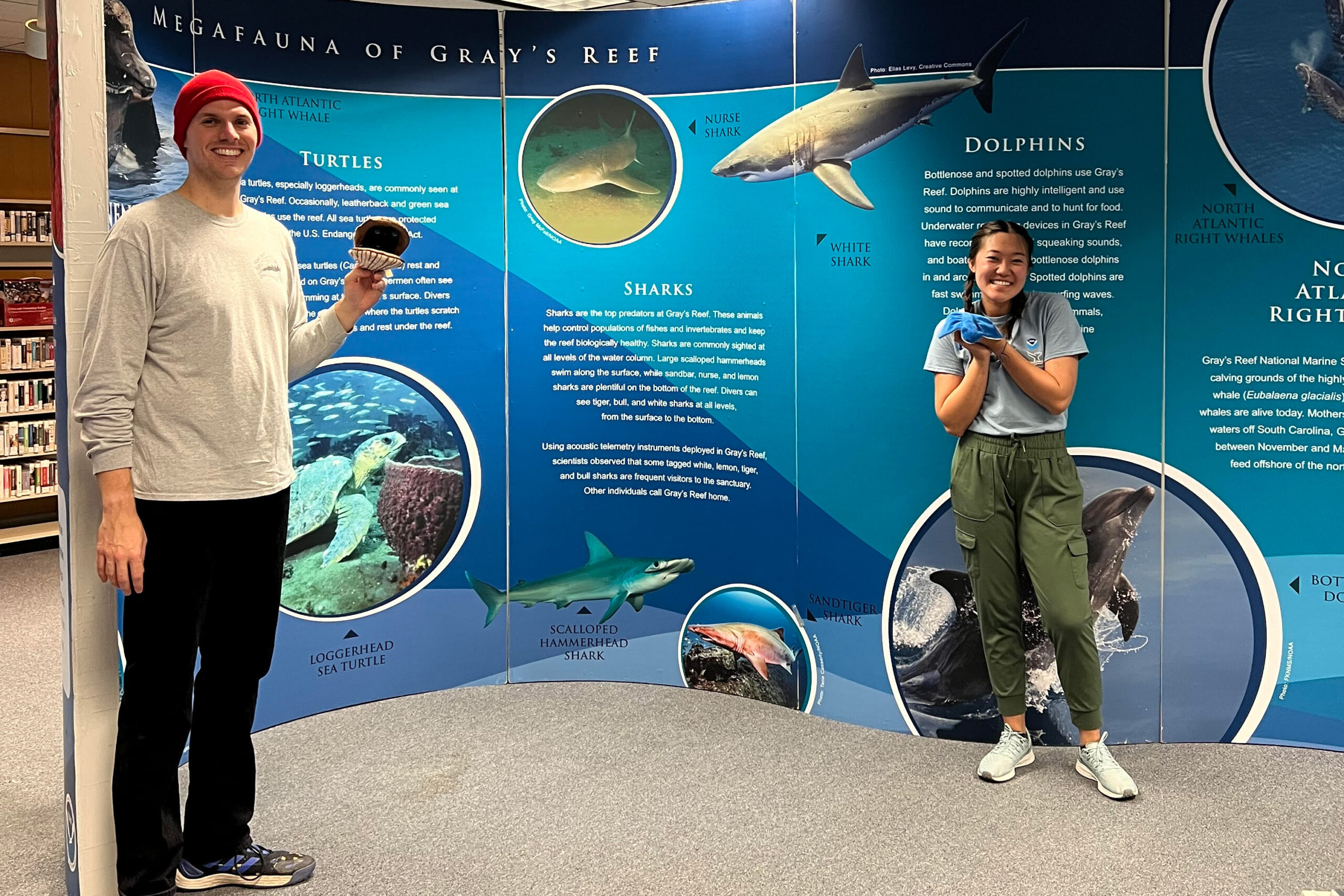Dive down to the reef, the ledges are aglow. Kaleidoscope of life teeming in a world below.
Gray’s Reef National Marine Sanctuary (GRNMS) represents ~2.2% of live-bottom habitat scattered across the South Atlantic Bight. In addition to sandy bottom, Gray’s Reef is composed of rocky ledges that provide habitat complexity, attachment points, and shelter to support thousands of species throughout the food web.
I was not familiar with the sanctuary until I looked into the Georgia Sea Grant program and saw GRNMS as one of the hosts for the State fellowship. Born and raised in the land-locked state of Utah, I loved nature and the outdoors, but my interest in the marine environment didn’t fully flourish until my semester abroad in Panama during my undergraduate studies. I then sought out as many marine related opportunities as I could find which led me to earning my Master of Science degree in Miami, Florida at the Rosenstiel School, studying bonnethead sharks with Field School in Biscayne Bay and Havenworth Coastal Conservation in Tampa Bay.
This fellowship seemed like a fitting step along my career path after graduate school, offering me insights into work with NOAA and marine sanctuaries. I joined the Gray’s Reef National Marine Sanctuary team at an exciting time with the implementation of a new paradigm, ramped up education & outreach activities, and preparation for a new research vessel. The second and third days of my fellowship consisted of attending the State of the Georgia Coast conference on Tybee Island. This provided me with a sound foundation for many projects to come. I have been part of a variety of opportunities spanning education & outreach, science, resource protection, boat operations, and professional development. I thrive in an environment that allows me to execute and coordinate many tasks and goals and have really enjoyed the dynamic atmosphere of this fellowship.
I have had the chance to engage with the public, stakeholders, and NOAA leadership through the hosting of our inaugural science symposium, representing Gray’s Reef at events such as the Fernandina Right Whale Festival, organizing meetings with the Sanctuary Advisory Council, and helping with the dedication ceremony of our new research vessel. The arrival of the research vessel Gannet allows the sanctuary to expand upon its long-term monitoring efforts as the vessel serves as an enhanced platform for diving operations, research equipment deployment, and year-round operations. It also allows the sanctuary to bridge science and outreach to host events such as the Rivers to Reefs program, bringing educators out to the sanctuary for the vessel’s maiden expedition.
I’m looking forward to what the remainder of this fellowship has in store, which currently includes attending another conference, acoustic receiver swaps, and a research expedition. This fellowship has already provided me many rewarding and valuable experiences that I’ll take with me into my career.



